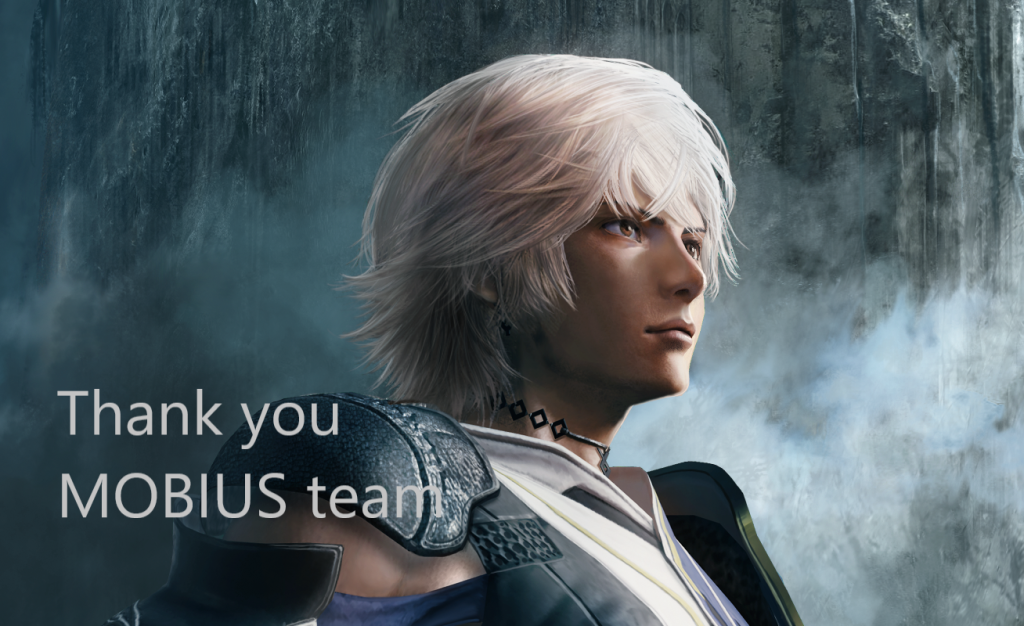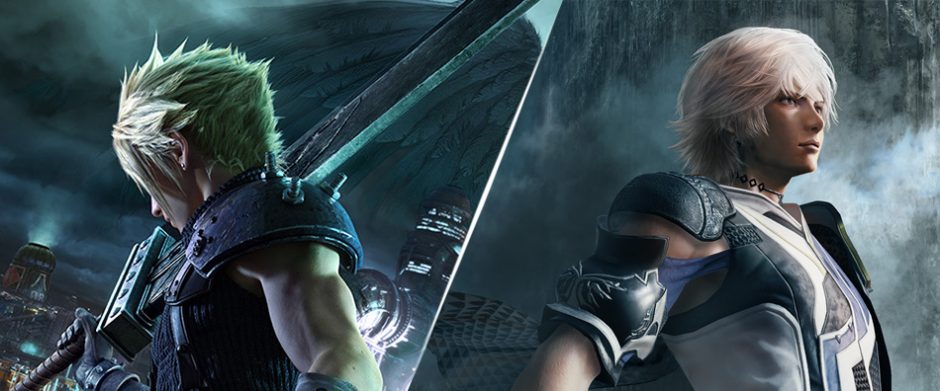Mobius Final Fantasy has now sadly been shut down worldwide, bringing an end to one of the most unique, ground breaking and special games in the Final Fantasy series.
The Japanese version launched on June 4, 2015 while the global version launched on August 3, 2016 and in the end ran for nearly 5 and 4 years respectively. An impressive amount of time considering the majority of Square Enix’s free-to-play service titles are shut down within the first two years.
But it would be unfair to compare it to any other title in the company’s history as it was and is very unique.
For starters it was developed internally in a time where the majority of Square Enix’s titles are outsourced. It was only ever the second mobile title developed internally and remains to this day the only one in the Final Fantasy series and only one developed for the entire world.
It is one of the only three Final Fantasy games actually developed internally since 2014 alongside Final Fantasy VII Remake and Final Fantasy XV in addition to continued development of Final Fantasy XIV and XI.
It was designed with the concept of “a rich gaming experience, anytime, anywhere”, bringing console quality graphics to iOS and Android devices. All graphics were made in high definition just like any other console title.
The game’s battle system would also be a welcome return for fans of turn-based-combat. Elements from the development team’s past games such as the Final Fantasy XIII series and Final Fantasy X series would be brought into the system loaded with depth.
It also featured the series’ classic Job system with jobs inspired by past Final Fantasy characters along with a selection of past Final Fantasy game characters available to be played as.
Speaking of the development team it was not just any team it was a team of veterans, headed by producer Yoshinori Kitase and featured director Motomu Toriyama, project leader Naoki Hamaguchi, scenario supervisor Kazushige Nojima, lead scenario writer Daisuke Watanabe, character designer Toshiyuki Itahana, art director Toshitaka Matsuda, graphics & VFX director Shintaro Takai, composer Mitsuto Suzuki and many, many more.
Overall the team featured many of the staff who had previously worked on the Final Fantasy XIII series and the majority of the remaining staff at the company who worked on the Final Fantasy X series and even Final Fantasy VII and Final Fantasy VIII.
This meant they were able to re-use many assets from the Final Fantasy XIII series.
And many of the staff were also working on Final Fantasy VII Remake at the very same time which saw actual assets from the remake featured in an exclusive event titled Eclipse Contact. Another event title Fatal Calling followed for the original game’s 20th anniversary. Kitase saw the EC and FC titles as continuations of the Compilation of Final Fantasy VII which featured AC, BC, CC and DC.
It also featured a Final Fantasy X event for the series’ 30th anniversary, titled Dream Within a Dream and it saw what happens to Tidus between the events of X and X-2 finally revealed. The involvement of so many key figures from the original games saw the event reach a special height which Kitase also credited to the returning staff.
A Final Fantasy VIII event titled The Sleeping Lion was also held for the game’s 20th anniversary giving fans their first original Final Fantasy VIII content since the original game’s release and saw parts of the game remade in HD for Mobius.
It also featured a Final Fantasy XIII event titled Lightning Resurrection which saw the assets reusing to great effect and teaming up with Lightning was a lot of fun.
And a Final Fantasy XII event called Light of the Skies was held to tie in with Final Fantasy XII The Zodiac Age. While this event may seem a little odd at first the team also actually featured various staff who worked on Final Fantasy XII or its sequel Final Fantasy XII: Revenant Wings.
It also saw summons from games like X, XI, XII, XIII and XIV brought to the world as Sicarius that you would encounter in various regions in the game including its very own multiplayer region where you could take them or some select characters on with up to 3 other players.
The game’s ability card system also saw plenty of fan service with many cards based on or taken directly from the various games throughout the series including games like XV, Type-0, Record Keeper and many more.
The ability cards along with the Job cards using new art were designed by both the game’s own artists and external artists which brings many different styles to the fray with thousands of cards.
Due to the game’s impressive level of quality it made perfect sense when they later brought the game to PC via Steam where you could play it in 4K resolution at up to 120fps.
And despite it being a free-to-play title it was fully voiced in cutscenes and even combat featuring a massive amount of dialogue with even all events featuring dialogue fully voiced in both English and Japanese. Players were always given the choice between the two.
The game even featured full playable events of Final Fantasy series creator Hironobu Sakaguchi’s game Terra Battle and the popular Dragon Quest of the Stars mobile game.
And I have not even mentioned the game’s own impressive scenario. With some of the company’s and series’ most influential storytellers in Kitase, Toriyama, Nojima and Watanabe it should be no surprise how good it is.
Now normally I’m not big on games where you get to name the main character but in this case it worked quite well and in the end I had no issues with it. The main character and its supporting cast also see an impressive degree of development. At first he’ll seem bland and the least interesting character but this works to the game’s story. He has lost all of his memories and he is the player character through and through. I found his attitude and personality worked quite well and I could relate and connect to them. And in regards to his development its very enjoyable to see him go from the start to someone who actually cares for others and ends up enjoying being a hero. In the game’s second act there was a few bad-ass moments he had that made me quite happy.
In regards to the supporting cast the one that left the biggest impression on me was the fairy Echo. The player’s relationship with Echo is at time’s a major highlight from their bickering and jokes to just their support. Like the main character you may find her annoying at first but grow to care for her. Echo’s personality in general is quite fun and her interactions with certain characters can be quite hilarious. Her encounter with Sephiroth was pure gold.
To the game’s other characters we have Serah who appears as a normal princess type character and develops into a spirited leader for the people. And yes, you will get to play as her.
Another playable female character is Meia. The Azure Witch is a mysterious character who goes on to become a powerful and wise ally.
And if Act 1 wasn’t deep and confusing enough for you Act 2 takes it to another level with new characters Sophie who became a personal favourite and the swordsman Graff.
And don’t worry, there are plenty of Moogles and even Chocobos.
While Act 1 feels somewhat basic in comparison now, Act 2 is where the team is able to take things to another level. The different playable characters, different types of quests and regions make the experiences more fresh, interesting and fun.
And a shout out to Suzuki’s score is needed. In addition to some great reworking of classic series music he provides a unique and great soundtrack on his own for the first time.
While Itahana’s character designs bring a much needed differing style to other major titles in the series.
Back in 2015 Kitase said he considered the game a AAA game and has said it had a development team similar in size to some console titles and it shows.
The game received considerable praise from the platform and engine makers. It was among the finalists for the 2015 Unity Awards for mobile games in the “Best 3D Visual Experience” category while also being honoured as one of the Apple App Store’s top games in 2015 for Japan and later for being one of the most beautiful games on the Google Play Store in 2016.
And it was actually quite popular. A little over a year ago it surpassed 20 million downloads worldwide and this number would have no doubt went up following its anniversaries, Final Fantasy VIII event, conclusion of Act 2 and the game’s shut down reveal.
And in a recent survey for the series held in Japan that many people from Square Enix have publicly spoken about, Mobius sat an impressive 20th of favourite games in the entire series.
There is an artbook for the game covering many pieces of art from its first Act and now 3 soundtracks to cover the game’s entire life but sadly the game itself and it’s epic story are literally impossible to play now. For it to die is a sad waste. Six years of HD development from some of the company’s most legendary and experienced developers and a major step for people like Hamaguchi and Suzuki who hold major roles on Final Fantasy VII Remake.
I hope and pray the company does re-release it in some way. The most obvious way would be to release it as a premium title like they previously did for Final Fantasy Dimensions II. Otherwise this will truly be a sad ending.
I would like to give a big thank you to the entire development team of Mobius Final Fantasy across its entire life span for bringing this incredible title to life and supporting it as you were able to.
Mobius Love forever~


Reblogged this on Bijan WordPress and commented:
The Tale of Mobius has ended
Although the story and it people will fade in time
I however will not forget their tale
Farewell Warrior of Light
Till we meet again
After playing it for 2 hours (or more :p ) everyday for 4 years, suddenly Losing WoL and Echo was hard.
If SE ever release this as a premium title I’ll definitely buy it, even though I think it will not be 100% the same.